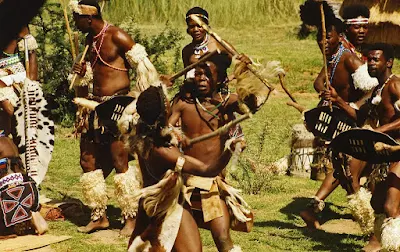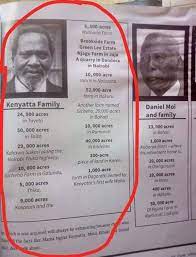Many people have speculated on the origin of Babukusu of Western Kenya. It is a shame to hear disjointed, misleading myths but there is greater shame in not knowing where we, as a people descended from.
The great ancestor of Babukusu is known as Mundu. He lived in Esibakala (the southern reaches of modern-day Egypt) and spoke Bantu language (whose name for a person ends with ‘ntu’ or ‘ndu’). Esibakala was a land of fertile plains, watered by the Nile that supported livestock breeding and growing of eleusine and millet. His appearance in Esibakala dates back to about A.D 700 and he lived among other communities.
Mundu would give birth to two sons; named Kundu and Masaaba. Masaaba was of light complexion but Kundu was the darker one. By now Mundu had moved southward towards Esirende (near present-day Sudan). Starvation following frequent draughts is believed to have been the reason. But also a race of brown people (Arabs) had made life difficult for him. It was around A.D 885 that he settled in Esirende- the Sudanese Savanna Wetlands.
Just like the Biblical Esau and Jacob, Kundu sought delight in tending his father’s livestock but Masaaba loved game hunting. Upon maturity, Mundu would give a considerable share of cattle both his sons. Kundu, the eldest would marry first and choose to move in the south-westerly direction in the path of the setting sun. As fate would have it, he and his brother would not cross their paths again. Conventional wisdom reveals that Kundu would settle around Lake Kioga (in present-day Uganda). Today, it is believed Kundu should be Kintu, the forefather of Baganda (Bakanda) and Basoga, who live around that lake region.
His younger brother Masaaba would not be quick to migrate and decided to stay around with Mundu, his aging father. Life in Esirende was not good at all, Babayi (Mundu's offspring) were preyed upon by Baima (Teso) who hunted as opposed to growing crops. Besides, Nabibia (Ethiopian tribes) went about in swarms raiding whoever they found on the way. The aged Bukusu ancestor made a decision to migrate eastward up to the land of anthills (Enabiswa). Here, in present-day Loukitang’, Babayi enjoyed termite delicacies almost all the year round. Later Babayi would drift to Etabasya, Enabukutu, finally arriving at Embayi.
It was at Embayi that Masaaba, now at a marriageable age, met the love of his life-Namurwa, the queen-mother of Babukusu. The year was A.D 912 and this is how it happened. One fine afternoon Masaaba spotted a fine and pretty Nilo-Hamitic girl. Masaaba fell in love with this Kalenjin girl and wasted no time in proposing his love for her. Namurwa would play hard to get for a while, in the full knowledge that her people would not endorse her to befriend or marry a man with a foreskin. It is to be remembered that Barwa circumcised their boys after every five years but Babukusu were not keen on circumcision.
The two lovers would arrange for secret rendezvous and day by day, Masaaba’s love grew stronger. In a bold move, Namurwa would arrange for Masaaba to meet her people. Just as Namurwa thought, their marriage could only be allowed if Masaaba accepted to go under the knife. The lovesick son of a herder was ready for anything to win over her. He would be knifed by a Nilo-Hamitic circumciser and a marriage ceremony organized as cows changed hands.
Within a year or so, the beautiful Namurwa became a mother bringing forth a son, Mwambu, meaning 'one born in a cave.' Soon, another one would come, Mubukusu and lastly, she bore her only daughter, Seela. The children grew up strong, cherished for uniting two hostile communities.
In his teenage years, something occurred which would turn Mwambu into a hero. One bright afternoon, there appeared a herd of Barwa Bamasaai. Finding Mwambu alone, the raiders swiftly captured his father’s herd and made off. But Mwambu wasn’t a boy to accept defeat easily. He ran after them, wailing awakening other Babayi in homesteads. They joined the pursuit. But being an agile herder, Mwambu outran the villagers, risking his life by following the raiders with absolutely no weapon in his hand.
Before long, he caught up with the rustlers and approached them boldly. Mesmerized by the courage of a boy who wants to ‘attack’ them empty-handed, they chose to reward him. They would give him a bull. “This is inkishu, which runs as fast as yourself”, they would say.
Happy for being complimented, he would return home under impression that the bull given was ingishu in Maasai. He would reach home and after narrating the ordeal, his father branded him the name Mukisu, the sharp and brave one. However, the Maasai for a bull was olkiten’g and inkishu is the name for any ordinary cattle. From then, Mwambu faded and Mukisu took its place.
Apart from Mukisu, Seela and Mubukusu, Masaaba had many other children. The two brothers grew and raised families of their own. Babayi now moved to Esengeli, derived from kamasengeli (iron slag). Legend bears that, here, the art of ironmongery flourished. But also sibling rivalry would occur at Sengeli and the two brothers went separate ways.
It happened that one day at an ox-spiriting ceremony (lulwasako), Mukisu's children would quarrel with Mubukusu's as the latter felt the former was mean in throwing meat feats. On one occasion, the conflict would elevate and several lives were lost. Mukisu and Mubukusu met and agreed to go separately so as to minimize conflict.
At around A.D. 925, Mubukusu's household left, heading eastward to the Silikwa highlands. The separation split the family into Babukusu while Bakisu (Bagisu) remained in present-day Uganda. To stamp their seniority (since Mukisu was eldest), Bakisu would retain the name of Bamasaaba; otherwise, both communities are sons of one father Masaaba.
Other exciting stories of family feuds and migration patterns have and others would be covered in this blog.
A story is good, until another is told….
*Tribute to:
· Prof Namusonge Sifuna
· Gideon Were- A History of Abaluhyia of Western Kenya (1967)
· Prof Namulundah Florence of City University of New York- From Our Mothers’ Hearths: Bukusu Folktales and Proverbs (2005)
· Dr. F.E Makila –the father of Bukusu Anthropology in the 20th Cy – An outline History of Babukusu of Western Kenya (1978)












Comments